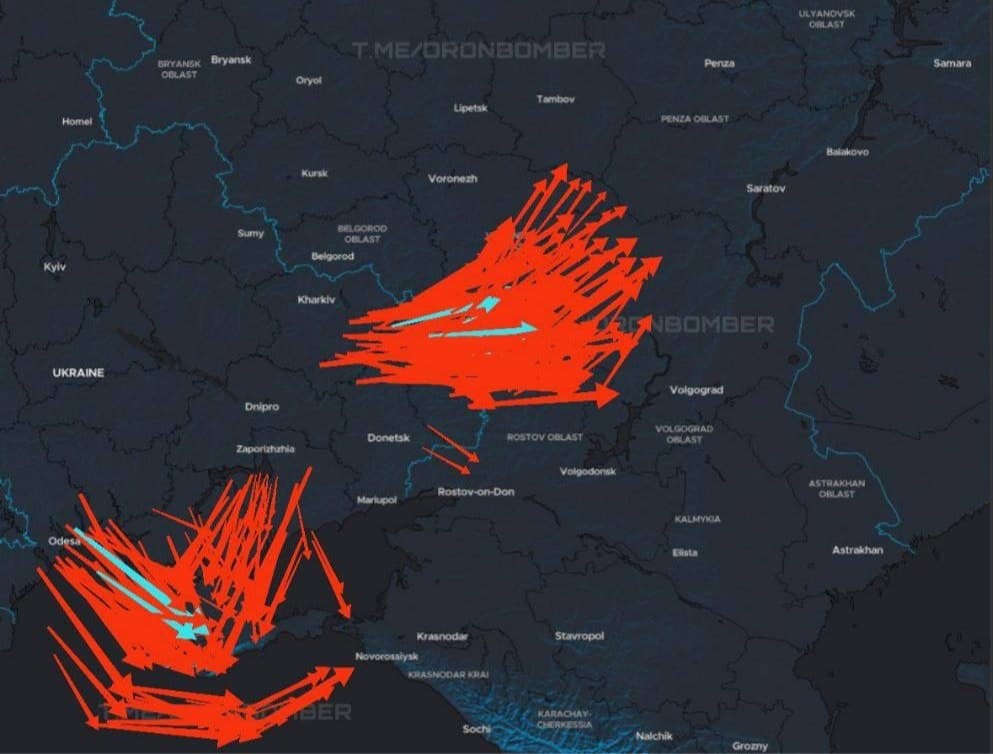EU and NATO Leaders Consider Offensive Measures Against Russian Hybrid Threats
In response to a series of escalating hybrid threats from Russia, European Union (EU) and North Atlantic Treaty Organization (NATO) leaders are actively discussing a range of unprecedented countermeasures. These measures come amid increasing incidents of Russian aggression, including drone incursions, sabotage operations, GPS jamming, and espionage activities. The discussions are taking place against a backdrop of heightened tensions in Europe, prompting officials to consider joint cyber strikes and rapid public attribution of these actions to Moscow. Additionally, unannounced military exercises along Russia"s borders are also on the table as potential responses.
Key Details
Among the key figures involved in these discussions is Italy"s Defense Minister, Guido Crosetto, who emphasized the urgency of the situation, stating, "The time to act is now." This statement reflects a growing consensus among EU and NATO officials that the current tolerance for Russian provocations is diminishing. The leaders are keenly aware of the delicate balance required in their response, aiming to deter further aggression without provoking a nuclear escalation.
The hybrid threats posed by Russia have been characterized by a variety of tactics that blur the lines between conventional and unconventional warfare. Drone incursions have become increasingly frequent, with reports of unauthorized Russian drones entering the airspace of neighboring countries. Sabotage operations have targeted critical infrastructure, while GPS jamming has disrupted navigation systems, affecting both civilian and military operations. Espionage activities have also intensified, with intelligence agencies across Europe reporting a rise in Russian spying efforts.
In light of these developments, EU and NATO leaders are exploring the possibility of conducting joint cyber strikes. This would represent a significant shift in strategy, as cyber operations have traditionally been conducted independently by member states. Rapid public attribution to Moscow would serve to hold Russia accountable for its actions and send a clear message of deterrence. Furthermore, unannounced military exercises along Russia"s borders would serve to demonstrate the readiness and resolve of NATO forces in the face of potential aggression.
Background
The discussions among EU and NATO leaders come at a time when the geopolitical landscape in Europe is increasingly fraught with tension. The rise of hybrid warfare tactics has necessitated a reevaluation of traditional defense strategies. Hybrid warfare, which combines conventional military force with irregular tactics and cyber operations, poses unique challenges for national and collective security. The EU and NATO have been working to adapt to these evolving threats, recognizing the need for a coordinated and robust response.
Recent incidents have underscored the urgency of this situation. Reports of drone incursions and sabotage have raised alarms among EU member states, prompting calls for a unified response. The potential for miscalculation or escalation remains a significant concern, particularly given the presence of nuclear capabilities in the region. As such, leaders are acutely aware of the need to navigate this complex landscape carefully.
What"s Next
As discussions continue, the implications of these potential countermeasures are significant. The EU and NATO"s willingness to consider offensive actions against Russia"s hybrid threats signals a shift in the approach to European security. If implemented, joint cyber strikes and increased military readiness could alter the dynamics of deterrence in the region. However, leaders remain cautious, emphasizing the importance of avoiding actions that could lead to a broader conflict.
In conclusion, the ongoing deliberations among EU and NATO leaders reflect a critical juncture in the response to Russian hybrid threats. With tensions escalating and the stakes high, the decisions made in the coming weeks will have lasting implications for European security and the geopolitical landscape.
For further insights on related developments, see recent developments in international relations.

![[Video] Russia loses manned space launch capability after Baikonur tower collapse](/_next/image?url=%2Fapi%2Fimage%2Fthumbnails%2Fthumbnail-1764278443399-dzsbge-thumbnail.jpg&w=3840&q=75)



![[Video] IDF soldier fires at suspect near Tunnels Checkpoint, one injured](/_next/image?url=%2Fapi%2Fimage%2Fthumbnails%2Fthumbnail-1764277844958-ybnp7f-thumbnail.jpg&w=3840&q=75)